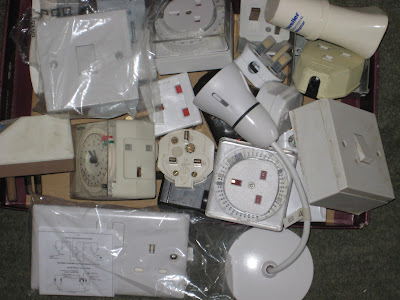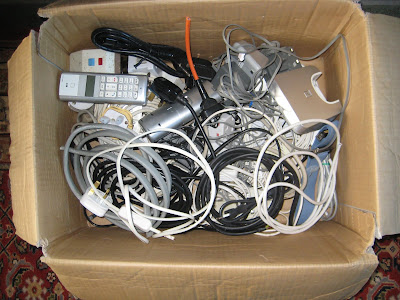 In the early nineteen-sixties, I received a Kodak Brownie Starmite camera for Christmas. I developed and printed its 127-sized (4cm2) black and white negatives at home. Despite being a fairly basic camera, it is striking how good the image quality could be if you managed to avoid camera shake.
In the early nineteen-sixties, I received a Kodak Brownie Starmite camera for Christmas. I developed and printed its 127-sized (4cm2) black and white negatives at home. Despite being a fairly basic camera, it is striking how good the image quality could be if you managed to avoid camera shake.
The pictures of Sooty the cat in one of my June 2021 posts reminded me that, in old photographs, objects in the background can often be as evocative as the main subject. They bring back endless associations, and a tale of two naughty boys and a new sideboard.
One outdoor picture shows Sooty sitting on the back doorstep with an old-shaped tall milk bottle instead of the more squat ones we have now (if we have them at all). The only colour picture of him I have, on a Kodacolor film I was given in 1964, finds him sitting next to the asbestos garage. It leaked water underneath the sides, so boards were placed to deflect rain falling from the roof.
Indoor pictures tend to have more things in the background. The Starmite camera had a built-in flash for single-use, magnesium flash bulbs. They shine bright through the years.
Here again is Sooty in our nineteen-sixties living room with its flowery wallpaper. The 405-line black and white television reflects the flash bulb. I am surprised to see we already had a fitted carpet rather than stained floorboards around a central carpet square.
The tiled open fireplace has brass tools and a fireguard. That was a job to get going on a cold winter morning, holding sheets of newspaper across the front to create a roaring updraft. The ships-wheel ash tray had belonged to my great grandfather; its wheel was a cigar-trimmer. In the corner is an ancient (even then), stand-alone electric fire with exposed elements mounted on an insulator. People sometimes lit cigarettes with it.
At the other side of the room, a curtain over the door excludes drafts, with a ‘roly-poly’ draft excluder blocking the gap at the bottom. Also in the living room is the fold-down dining table. The other room, less-used, was kept for ‘best’.
A fruit bowl stands on the sideboard. It is now in my office, a container for things like device chargers and USB leads. I still pile books on top of it. The circular mirror that was above it is now unused, somewhere in my loft.
I remember the wooden-armed armchairs with spotty red upholstery and antimacassars over the chair backs to protect them from grease when people washed their hair no more than once or twice a week at best, and some men wore Brylcreem or Silvikrin hair oil. I can see, smell and feel it now, white in the jar.
My brother and I would sit in those chairs in the house on our own on Saturday afternoons watching the wrestling on the television (along with up to 20 million others in Britain). There was Mick McManus the villain who always beat the good guy, Jackie Pallo, with his underhand antics. Another great was Yorkshireman Les Kellett, a friend of a friend at Hensall. But my favourite was Ricki Starr, the wrestling ballet dancer, who caused great amusement at the height of sixties homophobia by prancing and pirouetting effeminately around the ring in ballet shoes and tight trunks, a prelude to the delivery of an unexpected lethal drop-kick to his opponent’s head. It was so exciting, particularly the cheating that went on behind the referee’s back in two-man tag-team bouts. Pure entertainment! We laughed, cheered and shouted, and when something decisive happened, we celebrated by pushing down with our feet, kicking the chairs over on to their backs.
One Friday, our parents had a brand new sideboard delivered – the one in the above photograph – to replace the scratched and ancient second hand one we’d had. I can smell its beautifully polished wood. The very next day, my brother and I watched the wrestling on television as usual. Perhaps it was Ricki Starr finishing off his opponent with one of his aeroplane spins, or Jackie Pallo administering his trademark sit on back breaker and arm lever. We jumped and cheered as ever, and kicked our chairs over. The side posts of those chairs were hard. My brother’s hit the brand new sideboard and gouged out a semi-circular groove on the front of the bottom drawer. Zoom in and you can see it. Believe me, there was hell to pay.










